Any habitual reader of my blog (a species that I suspect does not exist) must know of my interest in things postal, as my quests to several DC post offices hopefully have made clear. However, since this interest grew out of my visit to the National Postal Museum, ever since when I have yet to travel back to my native Shanghai, I am not too proud to announce that I have little-to-none knowledge regarding that city’s postal facilities — Sure, I am well aware of Shanghai’s postal culture, having visited its own Postal Museum more than a year ago and watched that quaint 1984 film called Romance in Philately, or “邮缘”, which in my humble opinion should have been translated as Postal Connection.
Anyway, point is, I’m flying home in a few days, and thought I should take some time to familiarize myself with Shanghai’s postal landscape, and introduce some of my preliminary findings here for your entertainment. Some might wonder out loud why I’m writing in English — Well, I doubt many Chinese-speaking readers would ever stumble across this article, and I trust this piece would better serve its purpose as a guide for foreign enthusiasts, not one for those to whom original Chinese information is available. It also helps that Google Chrome does a pretty bang-up job at translation.
Post Boxes
Now let’s start from the most basic of these facilities — post boxes, or “邮筒”. Most Shanghai post boxes are cylindrical and in a dark green shade, marked with the yellow “China Post” signage, but some are more idiosyncratic. At least four functional variants seem to exist: (1) a maritime-themed blue-and-white post box by “China’s only maritime-themed post office,” at 315 Emei Rd. (峨嵋路315号); (2) a “post box of love,” appropriately colored pink and located in Shanghai’s “post office of love (爱情邮局),” which I shall elaborate on later, at 1991 Sichuan Rd. N. (四川北路1991号); (3) a bright red post box on Shanyin Rd. (山阴路) that bears the phrase “Collecting People’s Advice (人民意见征集),” into which anybody can deposit letters of grievances, which would then, I suppose, be delivered to their governmental agency of choice; (4) a white-and-green post box at the Shanghai International Automobile City (上海国际汽车城) branch, also the northernmost of this city’s post offices; (5) probably the most eye-catching among them, a “Curled Dragon” post box (盘龙邮筒) at 35 Xihu St. (西湖街35号) in the town of Zhujiajiao (朱家角), which stands right outside the only Qing Dynasty post office preserved in and around Shanghai. However, although the building is authentic, I have my doubts regarding the box itself.
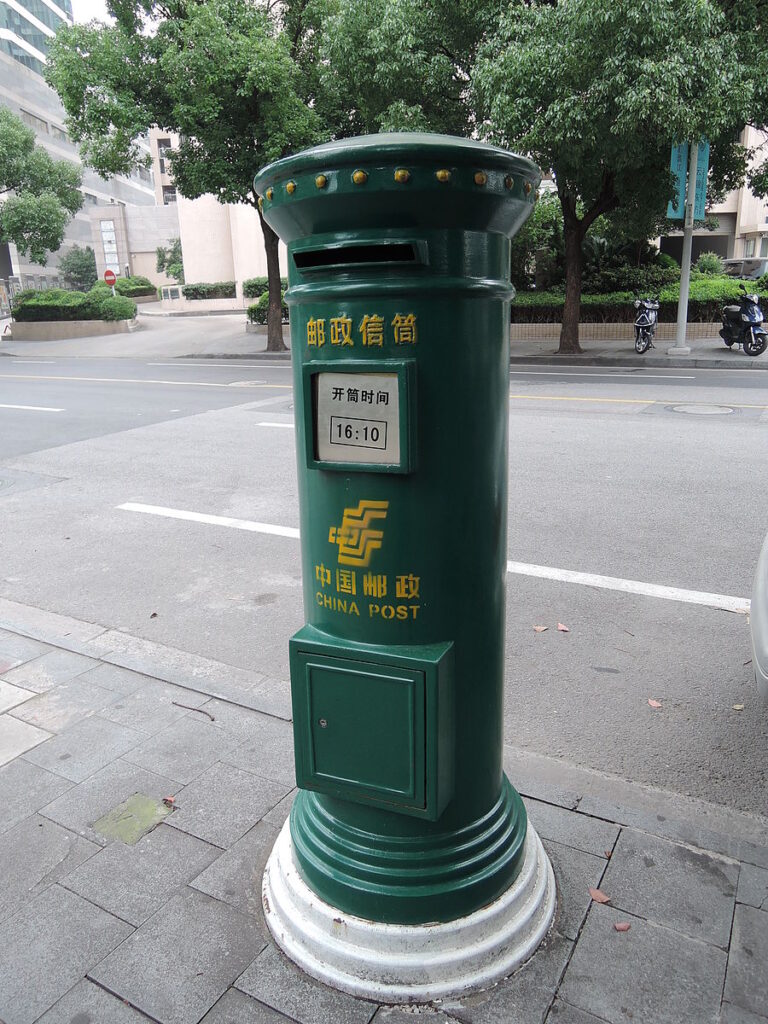
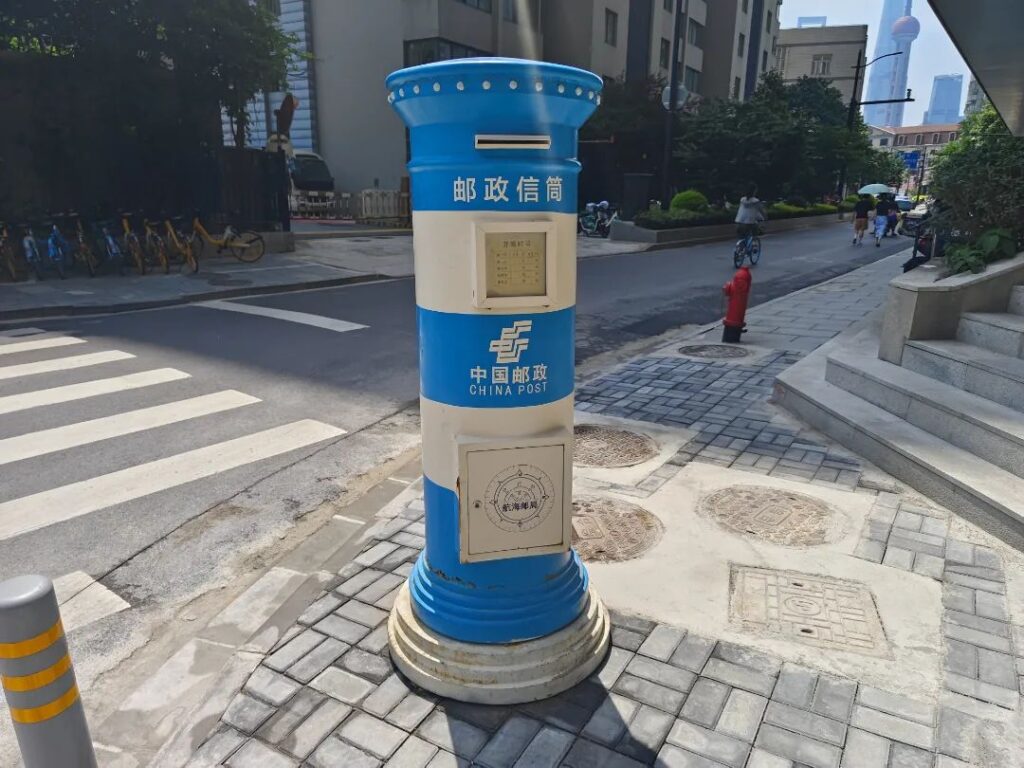
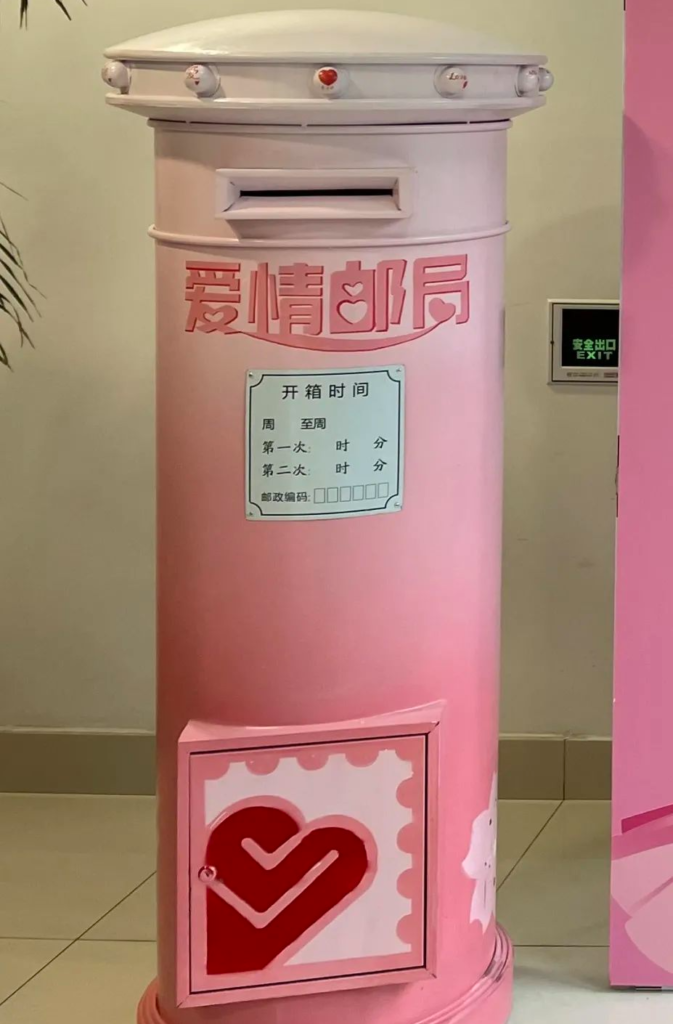
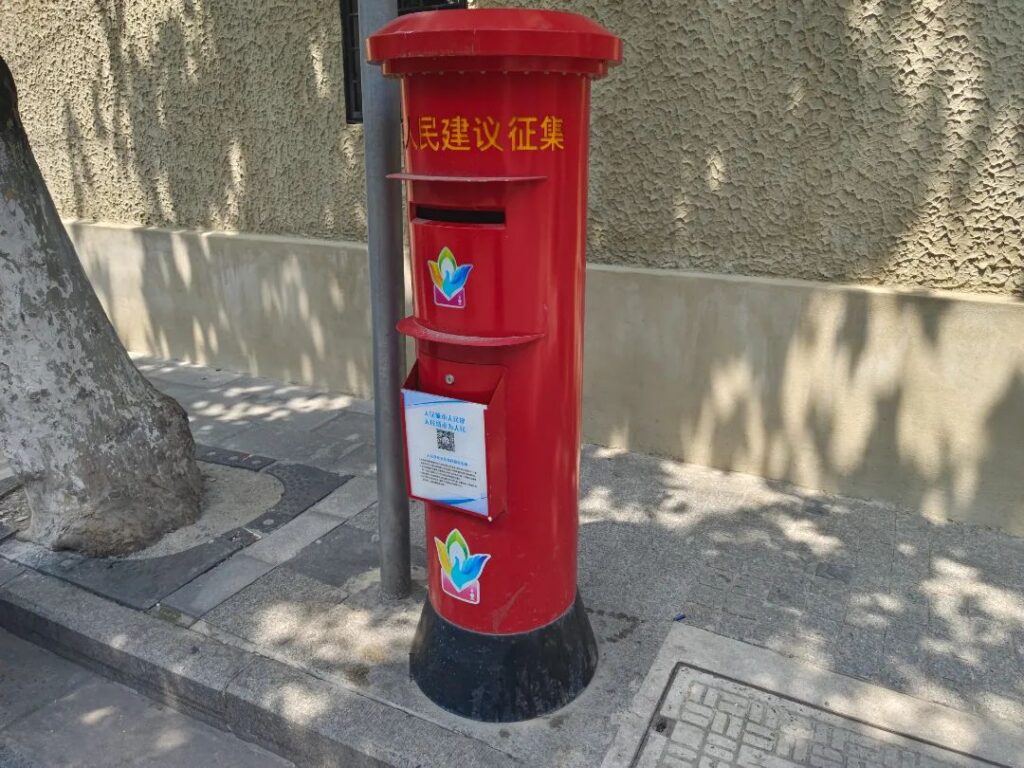
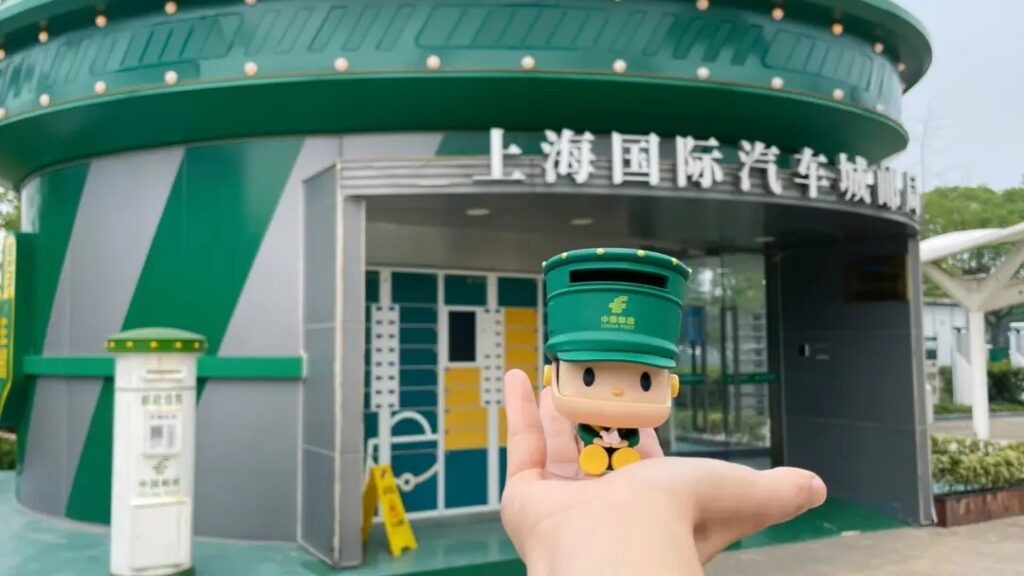
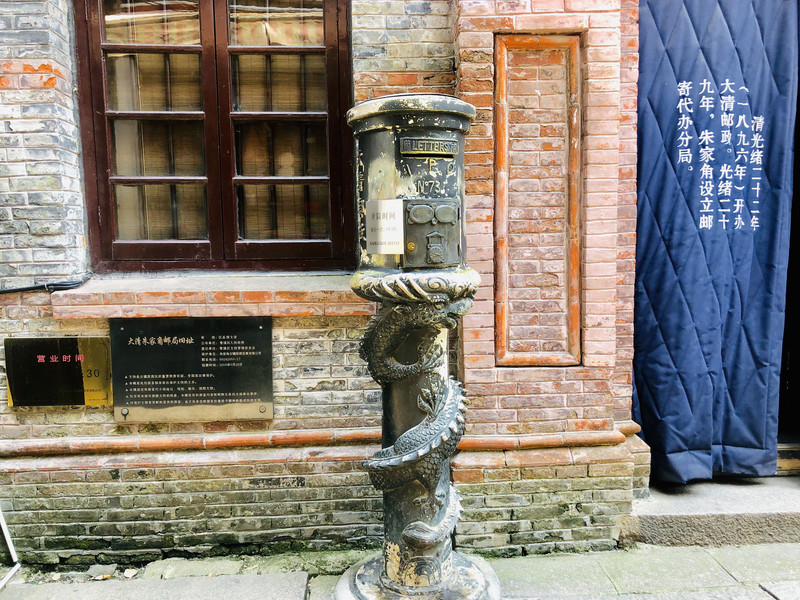
There also are a few more non-functional post boxes that serve only decorative purposes. The most interesting of them, perhaps, are on Tianai Rd. (甜爱路), which literally translates into “Sweet Love Rd.” Not surprisingly, it is dubbed “Shanghai’s most romantic roadway” and is home to the post office of love mentioned above. It also houses at least two more special post boxes for show, which are “not for mailing letters” although any further information is lacking. Note that Tianai Rd., as well as three of the five functional boxes I just referred to, are in Shanghai’s Hongkou District, and unlike its American counterpart the City of New York, Shanghai has no fewer than 16 districts, so it is hard to justify this disproportionately high concentration of cool post boxes — A reasonable explanation is that because Hongkou is richer in postal heritage than her neighbors, being home to China Post’s Shanghai office and the Postal Museum (with them sharing the same building), its government is more willing to promote this identity and install fancy-looking post boxes. I will, of course, look into other districts as well.
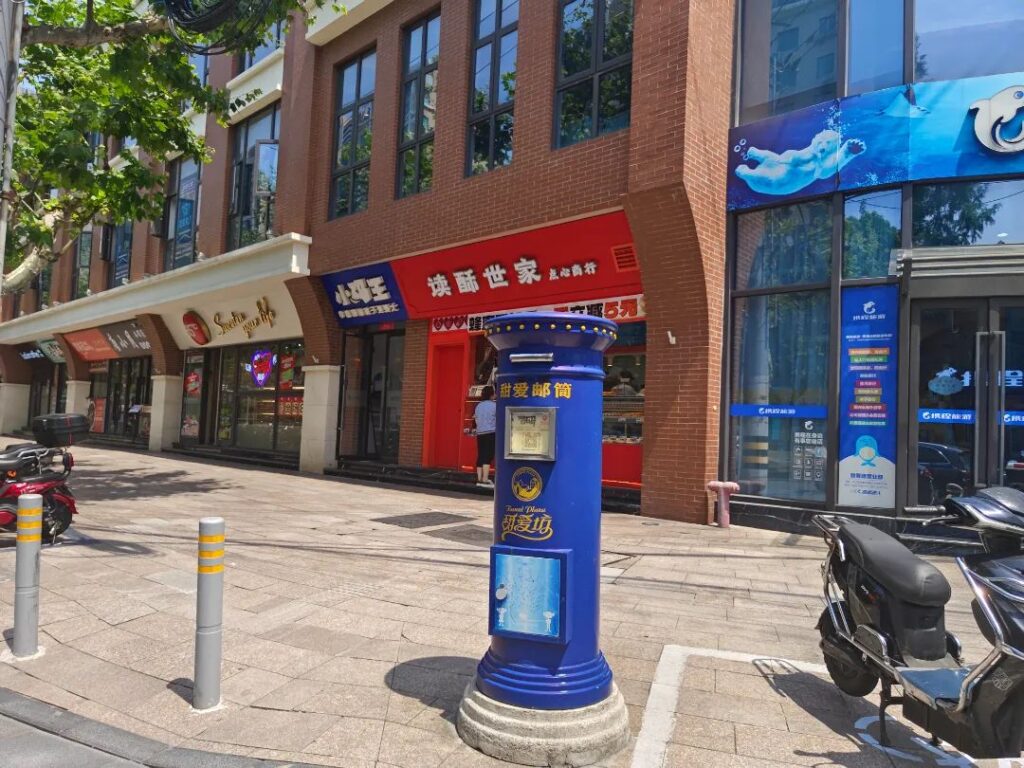
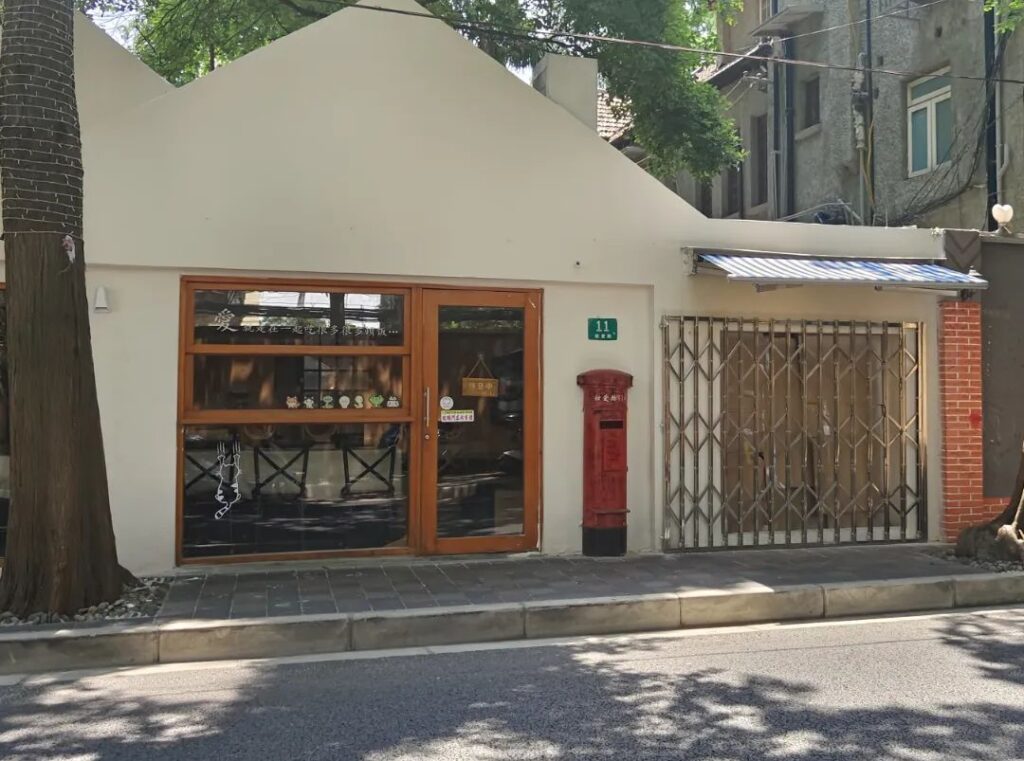
Three Classes of “Post Offices”
Above the post boxes are “post offices,” which seem to be broadly defined to include three classes of postal facilities: branch offices (支局), postal stations (邮政所), and sales departments (营业部). From what I can gather, you can mail letters, purchase stamps, and generally do your ordinary postal stuff at any and all of these places, with their only difference being that in size — a branch office seems to be the grandest (comparatively), and a sales department the smallest. I do not suppose they are within a hierarchy of some sort, though, and suspect that they are uniformly supervised by the aforementioned China Post’s Shanghai office. A complete list of the first two classes can be found here, and is searchable by district.
Themed and Youth Post Offices
Like post boxes, some post offices are also “themed,” usually coming with special decors, special cancellations, special envelopes and all sorts of souvenirs — With regard to the commercialization and revitalization of the postal service, Shanghai does seem to be doing a better job than Washington, DC. According to one enthusiast, only three themed post offices existed in Shanghai before 2021, while five emerged in that year alone with four more in the following year, pushing the total number up to 12. On top of those, there are approximately ten more “youth post offices (少年邮局),” which are post offices put into some elementary school (or occasionally middle school) for promoting the culture of stamp-collecting and other social causes, usually manned by enthusiastic students serving postal needs of their peers. Sadly my school, back in the days, so long, long ago, when all was good — I digress, did not have one of these.
A complete (or nearly so) list of themed post offices in Shanghai is as follows:
- Post Office of Love (爱情邮局), at Lu Xun Park Branch (鲁迅公园邮局), next to where China’s great writer and critic, Lu Xun, lived between 1927 and 1936. The mutual love and respect between him and his de facto wife, Xu Guangping, inspired the creation of this themed office in 2012.
- Post Office of Automobile Culture (汽车文化邮局), at Anting Branch (安亭邮局), near Shanghai’s Automobile City, a center of car industry and famous among car-racing fans for the SAIC Shanghai International Circuit, China’s only Grade One circuit. Opened in 2013.
- Maritime Post Office (航海主题邮局), at North Bund Branch (北外滩邮局), close to the city’s foremost harbor for cruise ships. Opened in 2016.
- Post Office of Nanxiang Steamed Bun, or Xiaolongbao (南翔小笼馒头主题邮局), at Nanxiang Branch (南翔邮局), promoting a traditional dish of Shanghai and its neighboring cities. Opened in 2021.
- Post Office at the Birthplace of Chinese Communist Party (中国共产党诞生地主题邮局), at Longmen Rd. Branch (龙门路邮局), the closest post office to where the CCP had its 1st National Congress in 1921. Opened in 2021 and prompted many collectors to wait in line for up to 18 hours for a first day cover.
- Post Office of Space Exploration (航天主题邮局), at Xindu Rd. Branch (鑫都路邮局) in Minhang District, home to Shanghai’s “Spaceflight City,” a technological hub in this field. Opened in 2021 on China’s 6th “Space Day,” more specifically Apr. 24th, on which date China launched its first satellite, Dong Fang Hong 1, in 1970.
- Post Office at Wukang Mansion (武康大楼主题邮局), which is actually located across the street from that famous Flatiron-style building built in 1924. It is also the first Shanghai post office to sell coffee, which is but the natural progression, I suppose, for a city with more coffee shops than any other in the world. The building itself is a most popular photo backdrop so beware of crowds. Opened in 2021.
- Post Office of the 4th CCP National Congress (中共四大主题邮局), at Hongkou Branch (虹口邮局). The 4th was not the most important of National Congresses, but the exhibition there seems to focus, to some extent, on the history behind China’s national flag. Opened in 2021.
- Post Office at the Birthplace of CCP’s Constitution (中国共产党章程诞生地主题邮局), at Site of the 2nd National Congress (二大纪念馆), which opened in 2022 on the 100th Anniversary of that meeting. The only reason we didn’t get a post office with the theme of its 3rd National Congress was because that one took place in Guangzhou.
- Post Office of the Former Residence of Sun Yat-Sen (孙中山故居纪念馆主题邮局), at Luwan Branch (卢湾邮局). Opened in 2022 to commemorate the 100th anniversary of Dr. Sun’s meeting with Li Dazhao, co-founder of the CCP and an early Chinese Marxist activist.
- Post Office No. 11 on the Yangtze (长江11号主题邮局), at Wusong and Songqing Rd. Branches (吴淞邮局、淞青路邮局), numbered 11 because they are ten more Yangtze-themed post offices upstream, with No. 1 located in Qinghai Province at its very source.
- Post Office of the Former Residence of Song Qingling (宋庆龄故居纪念馆主题邮局), at Luwan Branch (卢湾邮局). Song was the wife to Dr. Sun Yat-Sen and later Honorary Chairwoman of the People’s Republic. Opened in 2022.
- Qingxi Vintage Post Office (青溪时光主题邮局), at 2 Zhong St., Qingcun Township, Fengxian District (奉贤区青村镇中街2号), located on a street featuring vintage Chinese commercial buildings. Opened in 2022.
- Post Office of Clouds (云朵邮局), at 25 Shangnan Rd. (上南路25号). It was mentioned in an article published on China Post’s website, but I couldn’t seem to get any more information.
- Post Office for the China International Import Expo (中国国际进口博览会主题邮局), at Xujing Branch (徐泾邮政支局). It would appear that, although the on-site themed office would only exist during the annual exhibitions, you can still go to the Xujing Branch for special cancellations, etc, all year round.
There were two more temporary themed post offices I am aware of:
- Post Office of the Traveling Frog (旅行青蛙主题邮局), at Lancun Rd. and Xuhui Branches (蓝村路邮局、徐汇邮局), inspired by Travel Frog, a viral Japanese game that was once quite the rage in China.
- Post Office at the 10th Chinese Flower Exhibition (花博主题邮局), briefly set up on the island of Chongming during the exhibition in May 2021.
Now, time for youth post offices:
- Baoshan Youth Post Office (宝山少年邮局), at Xingzhi Middle School (行知初级中学), current address 125 Donglin Rd. (东林路125号), also known as “Little Tao (小陶子)” Post Office for the school’s namesake, famous educator Tao Xingzhi. Opened in 2009.
- Fengcheng Youth Post Office (凤城少年邮局), at Fengcheng New Village Elementary School (凤城新村小学); opened in 2011.
- Zhang Wentian Youth Post Office (张闻天少年邮局), at Yancang Elementary School (盐仓小学); opened in August 2020 to commemorate the 120th Anniversary of the birth of Zhang, who served as the Party’s General Secretary between 1935 and 1943.
- Post Office of the Red Youth (红色少年主题邮局), at 92 Xiangyang Rd. S. (襄阳南路92号); opened in 2020.
- Youth Post Office at Zhoupu 3rd Elementary School (周浦三小主题邮局); opened in 2021.
- Youth Post Office at Zhoupu Experimental Elementary School (周浦新区实验小学主题邮局). Most likely opened in 2021.
- Fu Lei Youth Post Office (傅雷少年邮局), at Fu Lei Middle School (傅雷中学); most likely opened in 2021. Fu, after whom the school was named, was a famous writer and translator of French literature.
- Yangpu Youth Post Office (杨浦少年邮局), at Yangpu Branch (杨浦邮局); opened in 2021.
- Teenagers’ Post Office at the Birthplace of the CCP (中国共产党诞生地青少年主题邮局), at 197 Luban Rd. (鲁班路197号); does not appear to be an “official” youth post office, but close enough.
- Youth Office at Hainan Middle School (海南中学少年邮局); opened in 2023, the first in Hongkou District.
- White Dove Youth Post Office (白鸽少年邮局), at Normal Elementary School of Jiading District, Baiyin Rd. Campus (嘉定区普通小学白银路分校); opened in 2023.
- Xinjing Youth Post Office (新泾少年邮局), at Xinjing Middle School (新泾中学); opened in 2024, the first in Changning District.
Image Credits:
- Mixtures, CC BY 3.0 https://creativecommons.org/licenses/by/3.0, via Wikimedia Commons.
- People’s Governmental of Hongkou Government, Shanghai.
- A travelogue on the website C-Trip, the author of which I could not seem to trace.
- Shennv Bumihuo, “The Loveliest Postal Roads Hidden in Shanghai,” China Post, Sep. 14, 2022.
